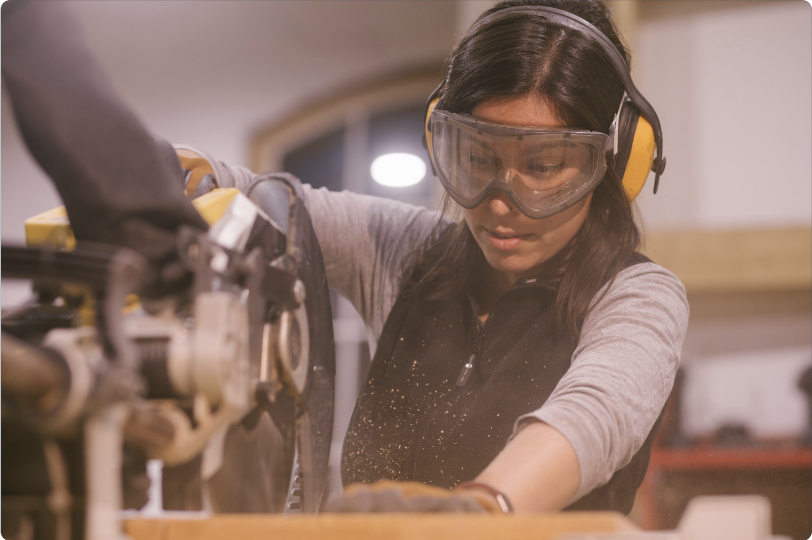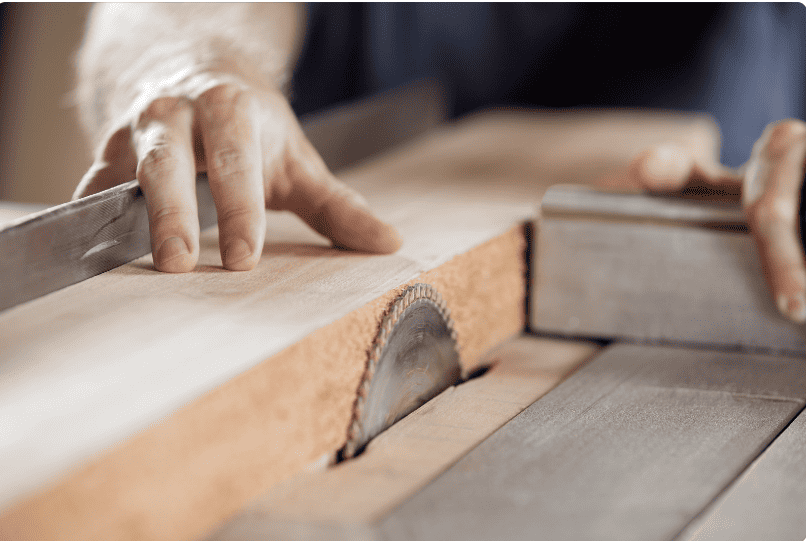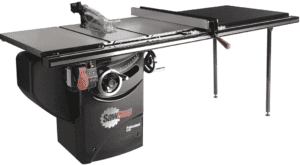Ultimate Guide to Finding the Best Table Saw
Are you an avid woodworker or a DIY enthusiast looking to upgrade your workshop? A table saw is an essential tool that can greatly enhance your woodworking projects. However, with so many options available in the market, finding the best table saw can be a daunting task. In this guide, we will walk you through everything you need to know to make an informed decision and find the perfect table saw for your needs.
Contents
- 1 Introduction
- 2 1.Understanding the Different Types of Table Saws
- 3 1.1Portable Table Saws
- 4 1.2 Benefits of Portable Table Saws
- 5 1.3 Contractor Table Saws
- 6 1.4 Cabinet Table Saws
- 7 2. Important Features to Consider
- 8 2.1 Motor Power
- 9 2.2 Blade Size and Cutting Capacity
- 10 2.3 Safety Features
- 11 2.4 Dust Collection System
- 12 2.5 Fence and Miter Gauge
- 13 3. Choosing the Right Table Saw for Your Needs
- 14 4. Budget Considerations
- 15 5. Project Requirements
- 16 6. Space Constraints
- 17 7. Tips for Using a Table Saw Safely
Introduction
When it comes to woodworking, a table saw is a versatile tool that can make precise cuts, rip boards, and tackle a variety of woodworking tasks. Whether you are a professional woodworker or a hobbyist, investing in a high-quality table saw can significantly improve the quality and efficiency of your work. But with different types, sizes, and features to consider, it’s important to understand what makes a table saw the best fit for you.
1.Understanding the Different Types of Table Saws
Understanding the Different Types of Table Saws
Before diving into the details, let’s explore the three main types of table saws available in the market: portable table saws, contractor table saws, and cabinet table saws. Each type has its own advantages and limitations, so it’s crucial to know which one aligns with your needs and preferences.
1.1Portable Table Saws

Portable table saws are lightweight and designed for portability, making them ideal for contractors and DIYers who need to transport their saws to different job sites. These saws typically have a smaller footprint and are easy to store when space is limited.
1.2 Benefits of Portable Table Saws
Portable table saws offer several benefits:
- They are lightweight and easy to carry.
- They are compact and suitable for small workshops or job sites with limited space.
- They often come with folding stands for added convenience.
- Limitations of Portable Table Saws
- Despite their portability, portable table saws have a few limitations:
- They may lack the power and cutting capacity of larger table saws.
- The smaller table size can limit the support for larger workpieces.
- The lightweight construction may result in less stability and increased vibrations.
1.3 Contractor Table Saws
Contractor table saws are heavier and more robust than portable table saws, making them suitable for professional woodworkers who require a higher level of performance and durability. These saws are typically mounted on a stationary stand or base.
Benefits of Contractor Table Saws
- Contractor table saws offer several benefits:
- They provide more power and cutting capacity than portable table saws.
- They have larger tables, providing better support for larger workpieces.
- They often come with advanced features and accessories for precise cutting.
- Limitations of Contractor Table Saws
- However, contractor table saws also have some limitations:
- They are less portable and may require a dedicated workshop space.
- The stationary stand or base takes up more floor space.
- They can be more expensive than portable table saws.
1.4 Cabinet Table Saws

Cabinet table saws are the largest and most powerful type of table saws available. These saws are designed for professional woodworkers and serious enthusiasts who require top-notch performance and exceptional cutting capabilities.
Benefits of Cabinet Table Saws
- Cabinet table saws offer several benefits:
- They provide unparalleled power and cutting capacity.
- They have larger tables and heavy-duty construction for stability and precision.
- They come with advanced features and accessories for professional-grade woodworking.
- Limitations of Cabinet Table Saws
- Cabinet table saws have a few limitations:
- These table saws are known to be the priciest among all the options available. They require a dedicated workshop space due to their large size and weight.
- They may not be suitable for beginners or occasional DIYers due to their complexity.
2. Important Features to Consider
When choosing a table saw, certain features should be taken into consideration to ensure the saw meets your specific needs. Take a moment to check out these important features you won’t want to miss!
2.1 Motor Power
The cutting performance of the table saw is determined by the motor power, which plays a crucial role in how well it cuts through materials Higher horsepower enables the saw to handle tougher materials and make more precise cuts. Consider the type of projects you’ll be working on and choose a motor power that suits your requirements.
2.2 Blade Size and Cutting Capacity

The blade size determines the maximum cutting depth and width of the table saw. A larger blade size allows for deeper cuts and better versatility. Additionally, consider the rip capacity, which refers to the maximum distance between the blade and the fence.
2.3 Safety Features
Safety should be a top priority when working with any power tool, including table saws. Make sure to check for some essential safety features when choosing a tool, such as a blade guard, anti-kickback pawls, and a riving knife. These features help prevent accidents and protect your fingers during operation.
2.4 Dust Collection System
Woodworking produces a significant amount of dust. Having a table saw equipped with an efficient dust collection system is a fantastic way to keep your workspace tidy and safeguard yourself from respiratory problems.. Look for a saw that has a built-in dust port or compatibility with a dust collection system.
2.5 Fence and Miter Gauge
The fence and miter gauge play crucial roles in making accurate cuts. A high-quality fence allows for precise ripping, while a reliable miter gauge enables accurate crosscuts and angled cuts. Look for sturdy and adjustable fence and miter gauge systems.
3. Choosing the Right Table Saw for Your Needs
Now that you have a better understanding of the different types and important features of table saws, it’s time to choose the right one for your needs. Consider the following factors:
4. Budget Considerations

Set a budget range that aligns with the features and quality you require. Remember that a table saw is a long-term investment, so it’s worth spending a bit more for better performance and durability. Although some table saws could be rather expensive, including the ones that are well known brand name such as Dewalt and Bosch, there are also ones that are budget friendly. I have reviewed few of the best table saws that budget friendly for your needs.
5. Project Requirements
Think about the types of projects you’ll be working on. If you primarily work on small DIY projects, a portable table saw might be sufficient. However, if you’re a professional woodworker or tackle larger projects, a contractor or cabinet table saw would be a better choice.
6. Space Constraints
Evaluate the available space in your workshop or garage. Ensure that the table saw you choose fits comfortably and allows for safe operation without compromising other tools or workstations.
7. Tips for Using a Table Saw Safely
Using a table saw safely is of utmost importance. Follow these tips to ensure a safe and accident-free woodworking experience:
Read and Understand the Manual
Before operating your table saw, thoroughly read the user manual and familiarize yourself with the specific safety guidelines and operational procedures. Understanding the tool’s features and limitations is essential for safe usage.
Wear Safety Gear

Make sure to always put on the right safety gear for your own protection. This includes safety glasses to shield your eyes, ear protection to safeguard your hearing, and a dust mask to filter out any harmful particles. Remember, taking these simple precautions can go a long way in keeping you safe and sound. These items protect you from flying debris, loud noise, and harmful dust particles.
Maintain a Clean Workspace
Keep your workspace clean and organized. Remove any clutter or obstacles that may hinder your movement or cause accidents. A clean workspace reduces the risk of tripping and allows you to focus on your work.
Avoid Distractions
When using a table saw, concentration is key. Avoid distractions such as phones, loud music, or conversations that can divert your attention from the task at hand. Focus on the saw and your workpiece to maintain optimal safety.
Keep Hands and Fingers Clear
Never place your hands or fingers near the spinning blade. Always use push sticks or other appropriate tools to guide the workpiece, keeping your hands at a safe distance from the blade. This helps reduce the chances of unintended contact, keeping you safer.
Finding the best table saw requires careful consideration of your woodworking needs, available space, and budget. Understanding the different types of table saws, important features, and safety precautions will help you make an informed decision. Remember, a table saw is an investment that can greatly enhance your woodworking projects, so choose wisely and prioritize safety.
FAQs
1. What is the best type of table saw for a beginner?
A portable table saw is often recommended for beginners due to its affordability and ease of use. It provides sufficient power for most DIY projects and is easy to transport.
2. Can I use a table saw without a dust collection system?
While it’s possible to use a table saw without a dust collection system, it’s highly recommended to have one in place. A dust collection system helps maintain a clean and healthy workspace by capturing the majority of sawdust.
3. What is the ideal blade size for a table saw?
The ideal blade size depends on the type of projects you’ll be working on. A 10-inch blade is the most common size and offers a good balance between cutting capacity and versatility.
4. How often should I replace the blade on my table saw?
The frequency of blade replacement depends on the amount of use and the type of materials you cut. As a general rule, it’s recommended to replace the blade when it becomes dull or starts producing tear-out in your cuts.
5. Can I use a table saw for non-wood materials like metal or plastic?
Table saws are primarily designed for woodworking tasks and may not be suitable for cutting non-wood materials. It’s best to use the appropriate tools and machinery specifically designed for metal or plastic cutting.





